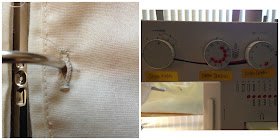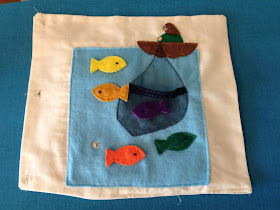I can clearly remember the time I first had delicious oatmeal. It was one summer during college when my boss took me out to breakfast. I imagine she peer-pressured me into getting the oatmeal because I never would have ordered it on my own.
Oh. My. Goodness. It was delectable. Sweet, creamy, utterly delicious oatmeal.
Oatmeal. I mean, we all know that porridge is what people used to eat for breakfast before they invented real breakfast cereal. You know, the kind that comes in a box with marshmallows? We moved on; civilization progressed to something more delicious. Yet here I was, eating a hearty, healthy bowl of oatmeal, and I loved it.
Yet years went by without a repeat of that experience. Oh sure, I ate the stuff every now and again. Elin would buy the cinnamon roll oatmeal packets from BYU creamery on ninth, and they made a bearable bowl of microwaved mush. I tried Trader Joe's something-sugary-pecan oatmeal, and it wasn't bad. But none of the instant oatmeal packets quite did it for me.
So I went beyond the convenient packets and tried a variety of other methods. Old fashioned on the stove, overnight oatmeal in the fridge, slow-cooker oatmeal, oatmeal with cream, butter, and sugar, oatmeal with yogurt and berries... nothing ever had staying power. I just didn't like it very much. Yet oatmeal is something I wanted to like! It's a warm, whole-grain, minimally processed food full of protein and fiber. I saw mothers who fed their children oatmeal every morning and wanted to be just like them.
So eventually, I went to the source. Meet Natalie, my inexhaustible sister-in-law. Natalie is the kind of mom that inspires us all. She gets up at the crack of dawn, exercises, dresses her daughters in cute matching outfits, braids their hair, and, of course, feeds them oatmeal. I sampled some of her oatmeal once at the in-laws, and it brought back memories of that first time I liked the stuff. So I asked the expert for her secrets.
The answer maybe should have been obvious: steel-cut oats, my friends. It improves the texture and taste three times over. With steel-cut oats, you don't have to dump in a ton of cream, butter, and sugar to make it palatable (and ruin your "healthy breakfast"). Instead, all you need is steal-cut oats cooked in a little milk with fruit and a touch of brown sugar.
Why isn't everyone doing this??? Well, these lovely oats take much longer to cook, up to a half-hour, in fact. There are some shortcuts around this. Sister Natalie orders
Coach's Oats, which apparently maintain the marvelous texture of steel cut but cook in 5 minutes. There are also 3-minute Steel Cut Oats one can buy at the store. I actually bought them on accident (and was mad.) Yet after trying them out, I find they are, for me, a cut above rolled or instant oats.
But my favorite remains regular steel cut. To be fair, my oatmeal guru also likes the old fashioned oats, but she always cooks them on the stove rather than microwave. Let me tell you what, though: pressure cooking is the way to go!
Love my new pressure cooker.
With me so far? Mathematically speaking...
Steel cut>Old Fashioned>Instant
Pressure cooker>stove top>microwave
How to Make Delicious Oatmeal
Step one: Buy steel cut oats. Many stores stock it in canisters with the old fashioned or instant oats. Others keep them with the bulk bins and let you scoop out your own.
Step two: Buy a pressure cooker. Just kidding! But seriously. You can just throw in 1 cup oats, 2 cups water, and 1 cup milk, cook on manual for 3 minutes, and then go get ready for 20 minutes. (It takes about that long when you include the pressure buildup and natural release.) The result is perfect every time.
However, assuming most
don't have a pressure cooker. bring 2 cups milk and 2 cups water to boil in a medium saucepan on the stove (you can adjust the milk-water ratio). Stir in 1 cup oats and reduce heat to low. Simmer uncovered for 25-30 minutes, stirring occasionally. This will make about 4 servings.
Step three: Mixins! Again, from Natalie: frozen blueberries are an awesome mix-in. They're easy to have on hand and can quickly cool your piping hot porridge to an eatable temperature (such a perk when feeding them to kids, amiright?) As long as you don't mind purple oatmeal, that is! I like to add blueberries, canned peaches, and a spoon of brown sugar.
I'm sure there are lots of great combinations out there, and I intend to try some more. Yet this is a great staple: simple, sweet, healthy, and so delicious. It also keeps pretty well in the fridge to re-heat the next day in the microwave. Happy eating!


























